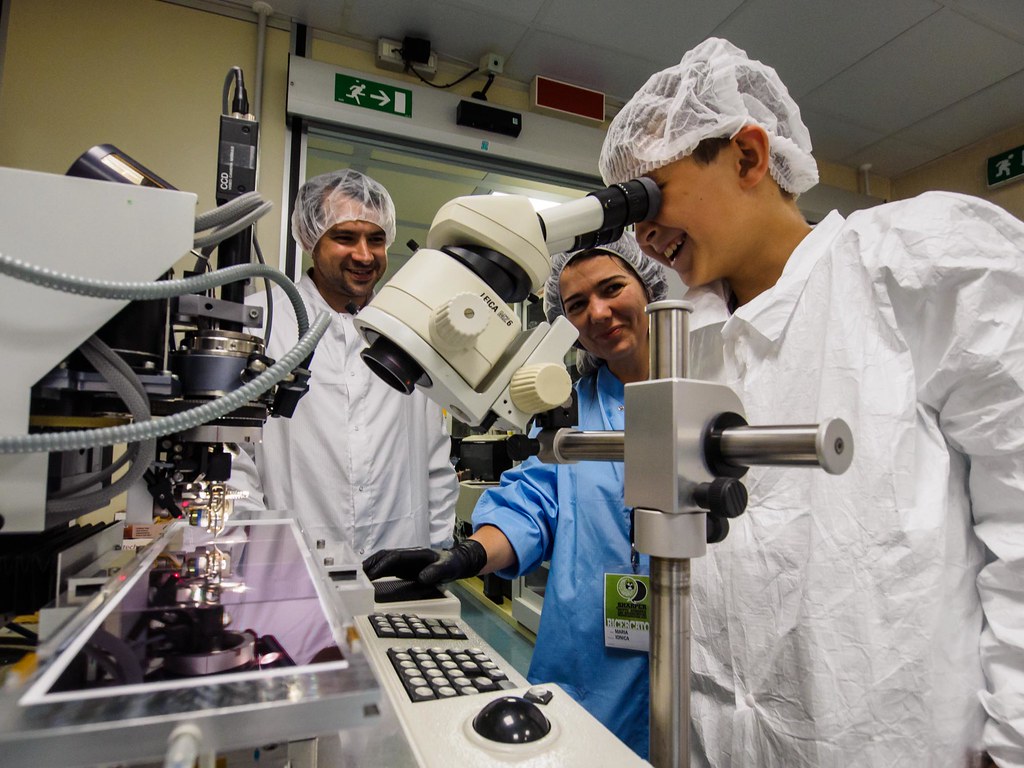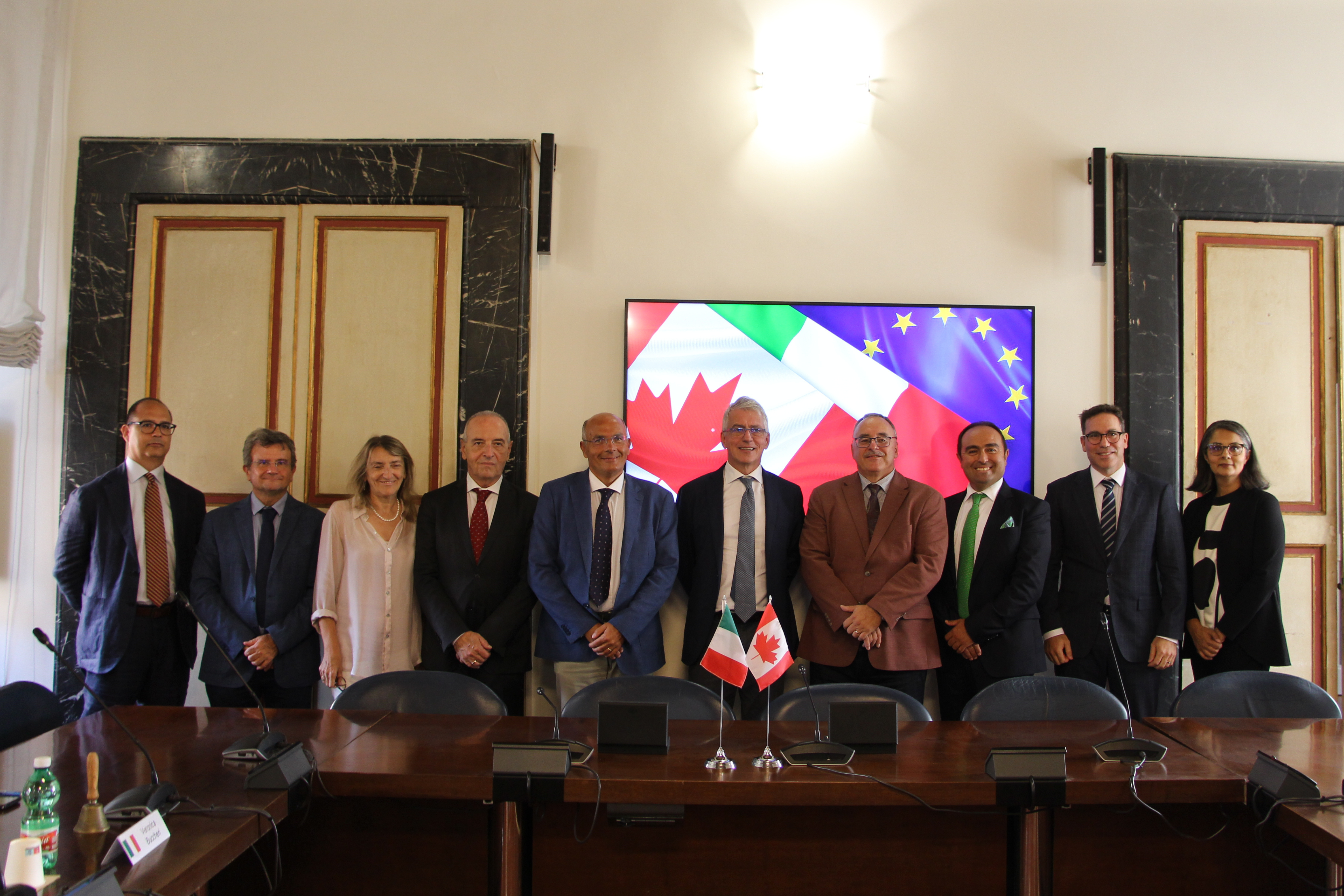The third and final measurement by the Muon g-2 experiment of a particular property of the muon, the so-called magnetic anomaly, fully confirms previous results and strengthens the global experimental average. For many years to come, the value announced today will stand as the most precise measurement ever made.
Scientists from the Muon g-2 experiment, hosted by the U.S. Department of Energy’s Fermi National Accelerator Laboratory and carried out by a large international collaboration that includes many researchers from INFN (the Italian National Institute for Nuclear Physics), have announced the third and final measurement of the muon magnetic anomaly. The result, presented today, June 3, 2025, during a scientific seminar at Fermilab and submitted to Physical Review Letters, agrees with the results published in 2021 and 2023, but was achieved with much greater precision: 127 parts-per-billion — exceeding even the original design goal of 140 parts-per-billion.
Muons, the protagonists of the Muon g-2 experiment, are fundamental particles similar to electrons, but about 200 times more massive. Like electrons, they possess the quantum property called “spin”, which makes them similar to small magnets: in the presence of an external magnetic field, they undergo a rotational motion known as precession, similar to that of a spinning top tilted with respect to a vertical axis. The speed of precession in a magnetic field depends on the properties of the muon, described by a number called the “g factor”, which theoretical physicists assigned a value of 2 nearly a century ago on the basis of the Standard Model of elementary particles. Soon, however, experimental measurements showed that g deviated slightly from 2 (it was slightly bigger), due to a quantity known as the muon magnetic anomaly (aμ), calculated as (g-2)/2.
Measuring this anomaly with extreme precision is the goal of the Muon g-2 experiment, which owes its name to the formula (g–2)/2. The most recent value measured by the Fermilab experiment is aμ = 0.001165920705 ± 0.000000000114 (statistical uncertainty) ± 0.000000000091 (systematic uncertainty) and it is based on the analysis of data collected over the last three years, from 2021 to 2023, combined with previously published results. The measurement takes into account a statistic almost 20 times larger than the first publication in 2021, and confirms, with 4 times less uncertainty, the 2021 value.
“As it has been for decades, the muon magnetic anomaly continues to be a stringent test for the Standard Model”, says Marco Incagli, physicist at INFN Pisa division and co-spokesperson of Muon g-2. “Thanks to the unprecedented level of precision, the new experimental result sheds new light on this fundamental theory and will serve as a benchmark for any future theoretical calculations”.
The muon magnetic anomaly encodes the effects of all Standard Model particles, and a discrepancy of the experiment from the theory – such as that emerged in the past – could indicate the presence of physical processes not foreseen by this theoretical framework, signalling the need to amend it or even exceed it. Naturally, the international collaboration of theoretical physicists Muon g-2 Theory Initiative worked in parallel with the experimental group to improve the theoretical calculation. In addition to data-driven methods (which produced values in contrast to those presented by Fermilab), a new approach using high-performance computing has recently been introduced. This method has led to a theoretical prediction that is close to the experimental measurement, but does not yet overlap with it.
“The Muon g-2 Theory Initiative aims to provide a theoretical prediction of the Standard Model with precision comparable to that of the experimental results, focusing on hadronic corrections, which are notoriously difficult to calculate”, explains Aida El-Khadra, coordinator of the Muon g-2 Theory Initiative. “Our 2025 White Paper already documents significant progress, but the current theoretical prediction remains considerably less precise than the experimental data. The Theory Initiative will continue supporting ongoing efforts, which we expect to reach the required level of precision to fully maximise the impact of the Muon g-2 experimental program”.
“Thanks to the pooling and synergy of diverse skills – from laser and optics experts to those in computing and data analysis – the INFN Italian group played a critical role in the success of the measurement”, concludes Giovanni Cantatore, physicist at the University of Trieste and INFN Trieste division and head of the Italian Muon g-2 group.
Today, the core analysis of the Muon g-2 experiment has come to an end, but the vast dataset collected over the past six years lends itself to further exploration. In the future, the collaboration will conduct new measurements of another muon property called the electric dipole moment and will test a fundamental aspect of physical laws known as CPT symmetry (charge, parity, time).
The Muon g-2 collaboration includes 176 scientists from 34 institutions in 7 countries. INFN Italian group has been actively involved in the experiment since its beginnings, also taking on leading roles. It designed and built two systems that significantly reduced the overall uncertainty in the magnetic anomaly measurement – an absolute laser calibration system for energy measurements in the calorimeters and a high-sensitivity optical magnetometer to track magnetic field transients – and played a major role in the demanding data analysis that led to this final result.
Resources
Video on the 2025 result of Muon g-2
Related images, © Fermilab
The 2023 result of Muon g-2
The 2021 result of Muon g-2






